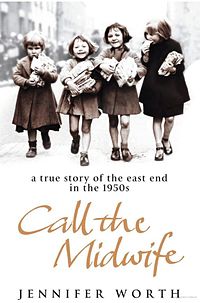Maybe it’s a mark of how wolfish and how polarized the American political climate has become that I am seized with something like fear, or, at the least, fear’s relative, anxiety, as I think about how to start this piece. Because whenever I write something that seems, however tangentially or tentatively, to touch upon one or another issue that has, once again, however improbably, divided people neatly along party lines, I receive comments and emails insisting that I am sounding dangerously ‘liberal.’ The corollary is that my Christian faith and identity is, therefore, questionable.
I do and do not understand this. First, I do because I was raised on World magazine’s kid’s newsletter and then Focus on the Family’s Brio magazine and the notion that faithful Christians were Republicans because the paramount moral question of Our Day was and is always and only the question of making abortion illegal. This is what Christians should be struggling for: to change the law as it regards abortion. The Republicans supposedly wanted this; the Democrats supposedly did not; therefore, to be a Christian meant supporting Republicans; to be a Democrat meant not being a real Christian. It really seemed that simple.
But I don’t understand this because, even from an early age, I suspected that there might be other compelling ethical issues that ought to concern Christians. I was troubled by the execution of Timothy McVeigh, troubled by the death penalty in general–who but God could give life, and, therefore, who but God should take it? I was troubled by the criminalization of homelessness, by the horrifying fear and racism implied in the shooting of Amadou Diallo, by poverty in America and elsewhere. I began to suspect that Christian values, as I understood them, did not necessarily align with one or another party’s preoccupations.

Nevertheless, in the years I’ve been writing (and living) I have heard and read Christians insist that to support a system of national health care, or amnesty for people who have entered the country illegally, or tax codes that distribute the burden of taxation more equally, or firmer laws on assault weapons and handguns (to take just a few examples) is to violate American if not Christian values. The assumption from a number of prominent Southern Baptists after the election was that Christians would be grieving and sorrowful over the Democratic victory, as if all Christian values were expressed only in the Republican platform.
This is turning into a long on-ramp toward what I really want to talk about, which is the fact that this weekend, more than 100 people died in a factory fire in Bangladesh. A garment factory fire in Bangladesh, where 3 million people, mostly women, work in clothing manufacturing; Bangladesh is, after China, the 2nd largest exporter of clothing in the world, which is to say that it’s unlikely that you don’t own something that was sewn there. Since 2006, more than 500 workers have died in fires. This past weekend, over 100 people died because there weren’t enough exits and because there was no approach road for the fire and rescue squads.
Immediately I thought of the famous Triangle Shirtwaist Factory fire of 1911; my father had told me the story of this fire when I was younger as an example of why we have laws regulating workplace safety. In fact the Triangle Fire–in which 146 people, again, mostly women, died–was the impetus for such laws. Not only that, it was the impetus for worker’s organizations–ie, unions–which, by many accounts, led to the decades of unparallelled prosperity and relative economic equality in the US (see this NYT op-ed for some numbers on that.)

These days it is stated, often with the force of ideology–of deep-seated and unquestionable fact–that government regulation is what kills the economy and is, therefore, bad. Pesky American regulations like minimum wages and limits on the length of the work day and work week and the age of workers and the number of bathrooms per worker and the number of breaks and the location of fire exits and the presence of extinguishers certainly do reduce profits, which is, perhaps, why it’s profitable for Gap, Tommy Hilfiger, and Walmart to have their clothes made in Bangladesh, where there are fewer ‘pesky’ regulations and garment workers are among the world’s lowest paid, earning $37 a month, and where, early this year, a union organizer was found tortured and killed.
Outsourcing is about more than losing “good American manufacturing” jobs. It’s also about losing those good American values that led us into years of prosperity, not perfection by any means, but prosperity and almost unparalled economic equality and safety for people in the workplace. ‘Outsourcing’ and getting rid of government regulations means returning to conditions that gave rise to the Triangle Fire, except that now, it doesn’t happen in our cities, but in cities a half a world away, while ‘good’ American companies like Walmart turn a hefty profit that never seems to trickle down to the people who work in their stores.
I have been accused by other Christians of being nothing less than demonic for advocating, for example, that people who can get vaccinated do, simply because cell lines from a fetus aborted in the 1960s were used in the development of one or another vaccine. There are similar declarations made regularly: avoid this, don’t vote for them, this is morally tainted. But rarely have I heard prominent evangelicals decry atrocities like this one, to declare an evangelical boycott on Walmart, whose clothes are certainly tainted with the blood–if not, in fact, the ashes–of the near-slaves who produce them, to declare this a matter of moral import, to insist that all of God’s children deserve not only to live but to flourish, and to insist that the government can and should implement laws protecting that life and flourishing, perhaps because to do so makes one sound suspiciously ‘liberal.’
Why suspiciously liberal, and not simply decent; simply Christian?
Like this:
Like Loading...





